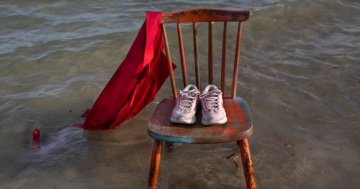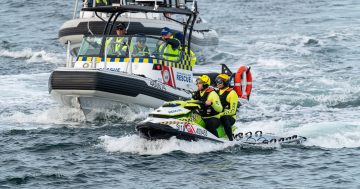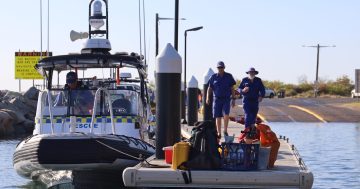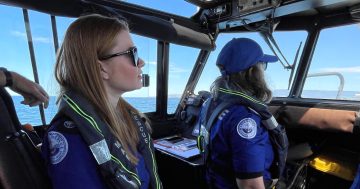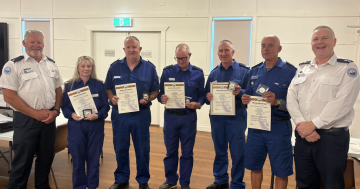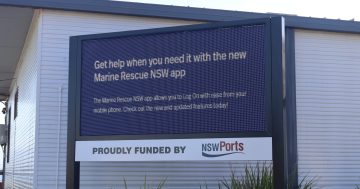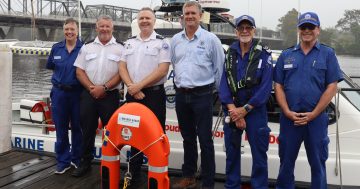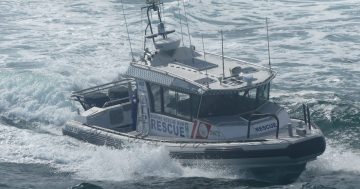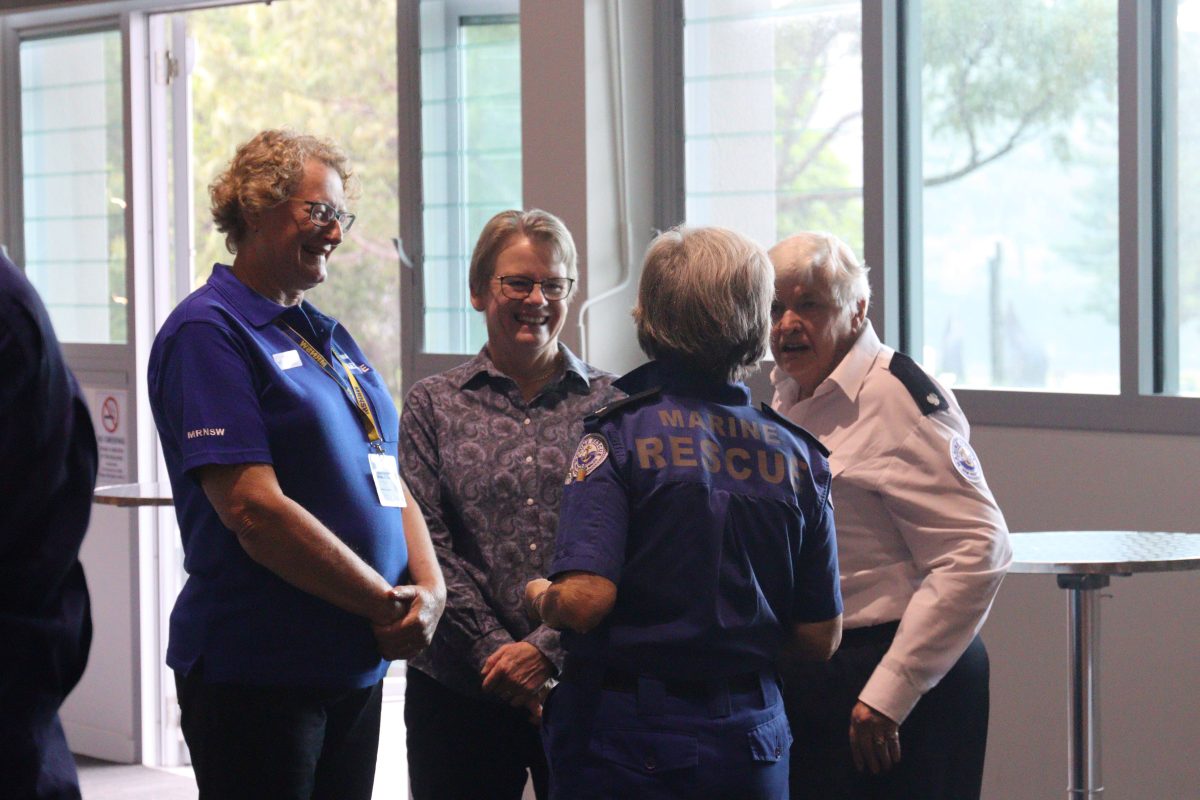
Past and present Ulladulla Marine Rescue volunteers gathered on 4 May to celebrate 50 years of saving lives. Photo: Marine Rescue NSW.
Illawarra Marine Rescue this year recorded the busiest boating season in its history, with more than 800 people safely returned to shore thanks to volunteer efforts.
A Marine Rescue NSW spokesperson said the unit had undertaken 351 search-and-rescue missions, including 179 emergency responses, with 847 people safely returned to shore across all seven Illawarra units, from Port Kembla to Kioloa.
Port Kembla, Jervis Bay and the Shoalhaven were the stations with the highest demand. More than 100 rescues occurred off Port Kembla, 90 off Jervis Bay and 61 off the Shoalhaven.
The demand for help was 7 per cent higher than the previous season.
Marine Rescue NSW Commissioner Alex Barrell urged boaters to Log On and ensure they’re well prepared before heading out on the water.
“While the official boating season is over, we know it is a year-round activity and we are reminding boaters who plan on heading out of the water, particularly over these colder months, that you’ve got the right safety equipment for your trip and that you’ve logged on with your local Marine Rescue NSW base,” he said.
“Importantly, an added safety message during the winter months is to make sure that you’ve got additional warm clothing when you go out boating.
“It is vitally important that everyone on board is wearing a lifejacket and if your boat overturns, please stay with your vessel.”
At Marine Rescue Ulladulla, almost 80 past and present volunteers gathered on Saturday, 4 May, to mark the unit’s 50th anniversary of saving lives.
Commissioner Barrell said it was an important occasion to acknowledge the selfless efforts of all members who had volunteered at the unit since it began servicing the local boating community in 1974.
“It’s wonderful to be here to celebrate 50 years of Marine Rescue Ulladulla,” he said.
“We are so fortunate to have these volunteers that give up their time every day of the week to serve the local community and more importantly, serve the boating community on the South Coast. We could not do what we do without them.”
Marine Rescue Ulladulla Unit Commander John Samulski said the unit had a proud history.
“It started with humble beginnings by the local community, from the vessel Kyli and radio operations from one of the members’ houses through to state-of-the-art equipment and vessels we have today,” he said.
Marine Rescue Ulladulla is now supported by 82 volunteers who cover more than 3500 square kilometers of ocean as well as the local waterways with three dedicated search-and-rescue vessels and a specialised radio communications room.
Unit Commander Samulski acknowledged the dedication of members and supporters who helped the unit rise from the ashes following a major setback in 2013.
“Our headquarters building burnt to the ground but through the endurance and hard work of our members, the local community and the state government, we were able to rebuild to a state-of-the-art facility which we enjoy today,” he said.
Long-serving volunteer Raymond Dixon has dedicated almost 37 years to the unit after coming on board in 1987 and said his reason for joining was simple.
“It was for my own safety and anyone that was in the boat with me,” he said.
Mr Dixon has been involved in numerous search-and-rescue missions during his time with the unit and said he would never forget the 1993 Sydney to Hobart yacht race.
“We had to bring 12 yachts into the harbour and at that time, we had to put moorings down from the breakwall to the slipway so the boats could be tied up because there weren’t sufficient places at the wharf for the boats to be tied up to,” he said.
Mr Dixon said huge progress has been made in boating communications over the past four decades.
“The lack of correspondence from boats going out to sea was a major challenge in the early days,” he said.
“Our biggest trouble was not knowing where they were when they were overdue and if ever they broke down, we always had trouble finding them.”
Marine Rescue NSW is a volunteer-based not-for-profit professional organisation dedicated to keeping boaters safe on the water and supporting local communities.








